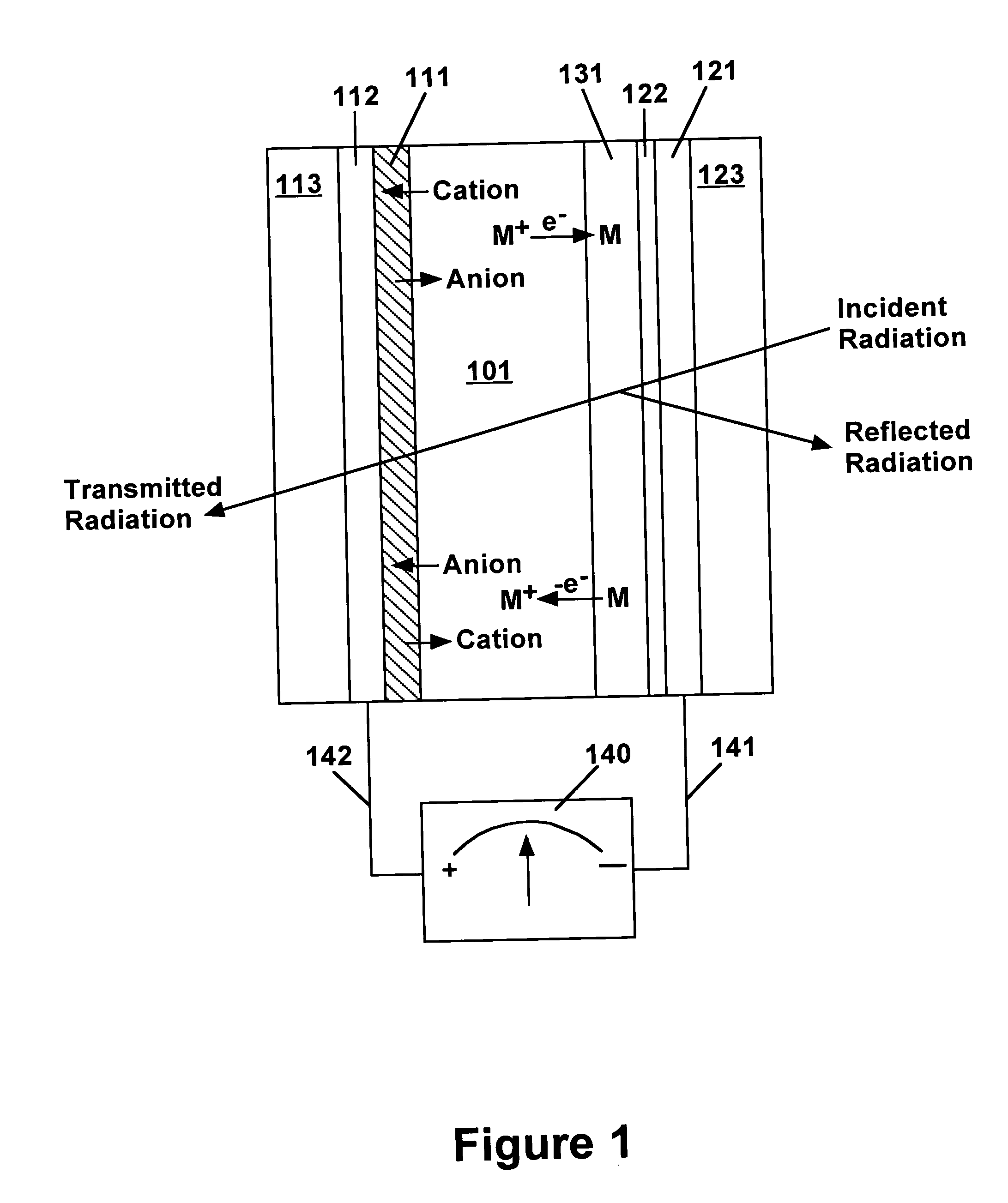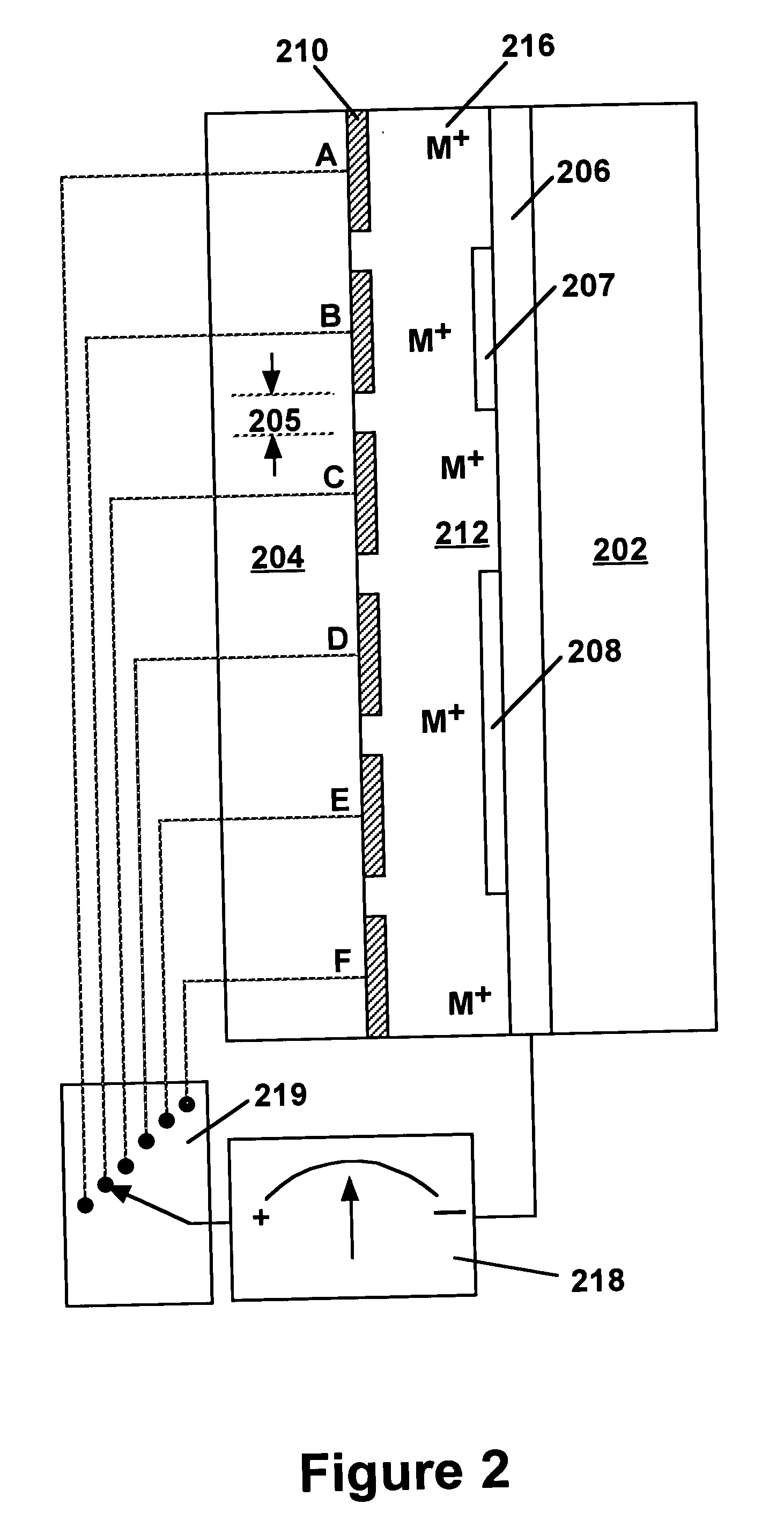Reversible electrodeposition optical modulation device with conducting polymer counter electrode
a counter electrode and optical modulation device technology, applied in non-linear optics, instruments, optics, etc., can solve the problems of reducing device lifetime, limiting switching speed and cycle life, and generating heat, so as to achieve minimal effect of counter electrode on device performan
- Summary
- Abstract
- Description
- Claims
- Application Information
AI Technical Summary
Benefits of technology
Problems solved by technology
Method used
Image
Examples
Embodiment Construction
[0024] This invention provides an optical modulation device for controlling the propagation of electromagnetic radiation comprising a conducting polymer counter electrode, an electrolyte containing ions of an electrodepositable metal, and an optical modulation electrode at which reversible metal electrodeposition occurs. As used in this document, the term “optical” encompasses radiation throughout the electromagnetic spectrum, including visible light, infrared radiation, and radio frequency radiation. The optical modulation device of the present invention may be designed to control the propagation of electromagnetic radiation in any wavelength region. The term “transparent” denotes substantially high transmission of the electromagnetic radiation whose propagation is controlled by the optical modulation device. The term “conducting polymer” also encompasses the term “electroactive conjugated polymer”, which is also used in the literature.
[0025] Optical modulation devices according t...
PUM
 Login to View More
Login to View More Abstract
Description
Claims
Application Information
 Login to View More
Login to View More - R&D
- Intellectual Property
- Life Sciences
- Materials
- Tech Scout
- Unparalleled Data Quality
- Higher Quality Content
- 60% Fewer Hallucinations
Browse by: Latest US Patents, China's latest patents, Technical Efficacy Thesaurus, Application Domain, Technology Topic, Popular Technical Reports.
© 2025 PatSnap. All rights reserved.Legal|Privacy policy|Modern Slavery Act Transparency Statement|Sitemap|About US| Contact US: help@patsnap.com



